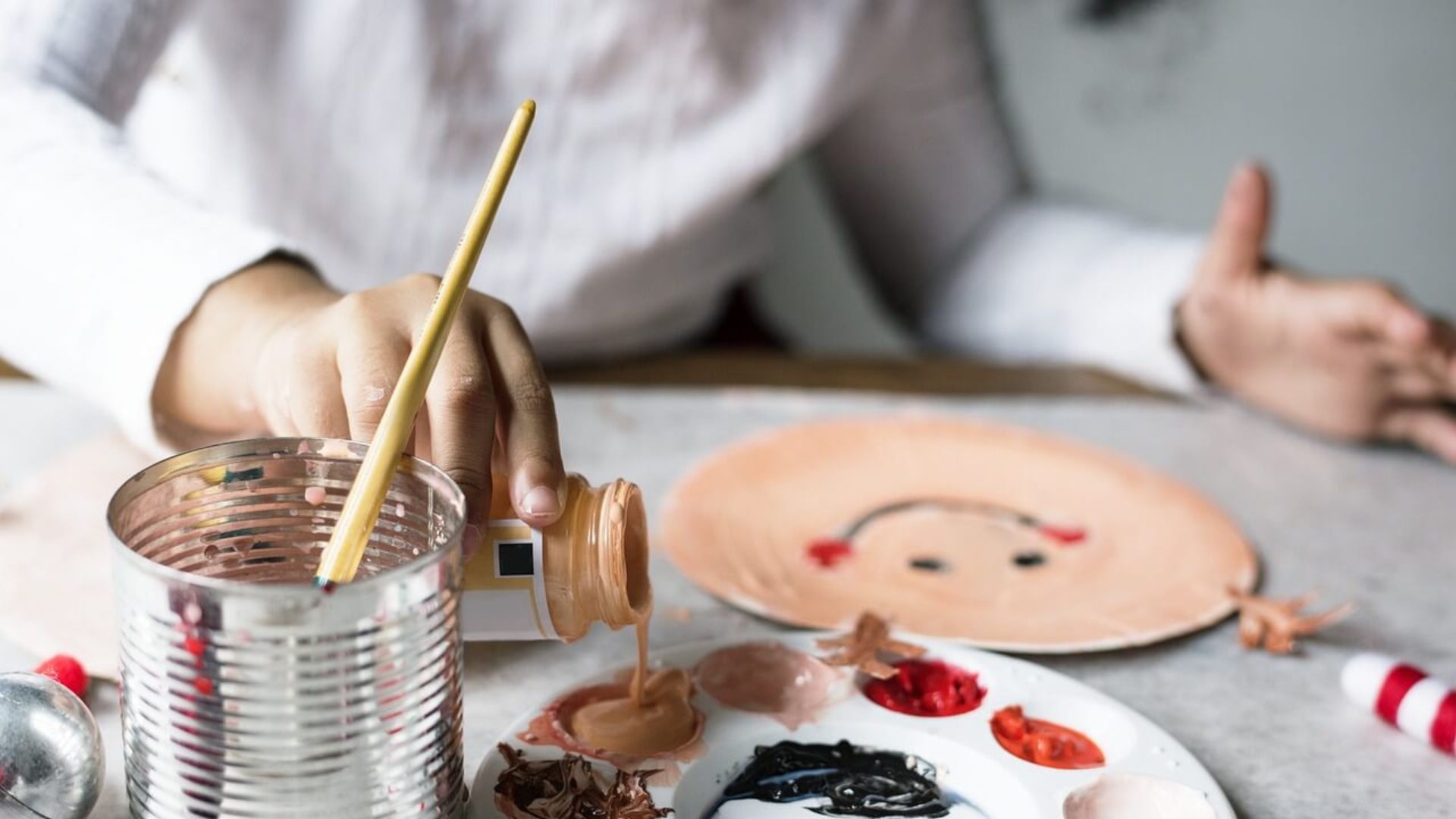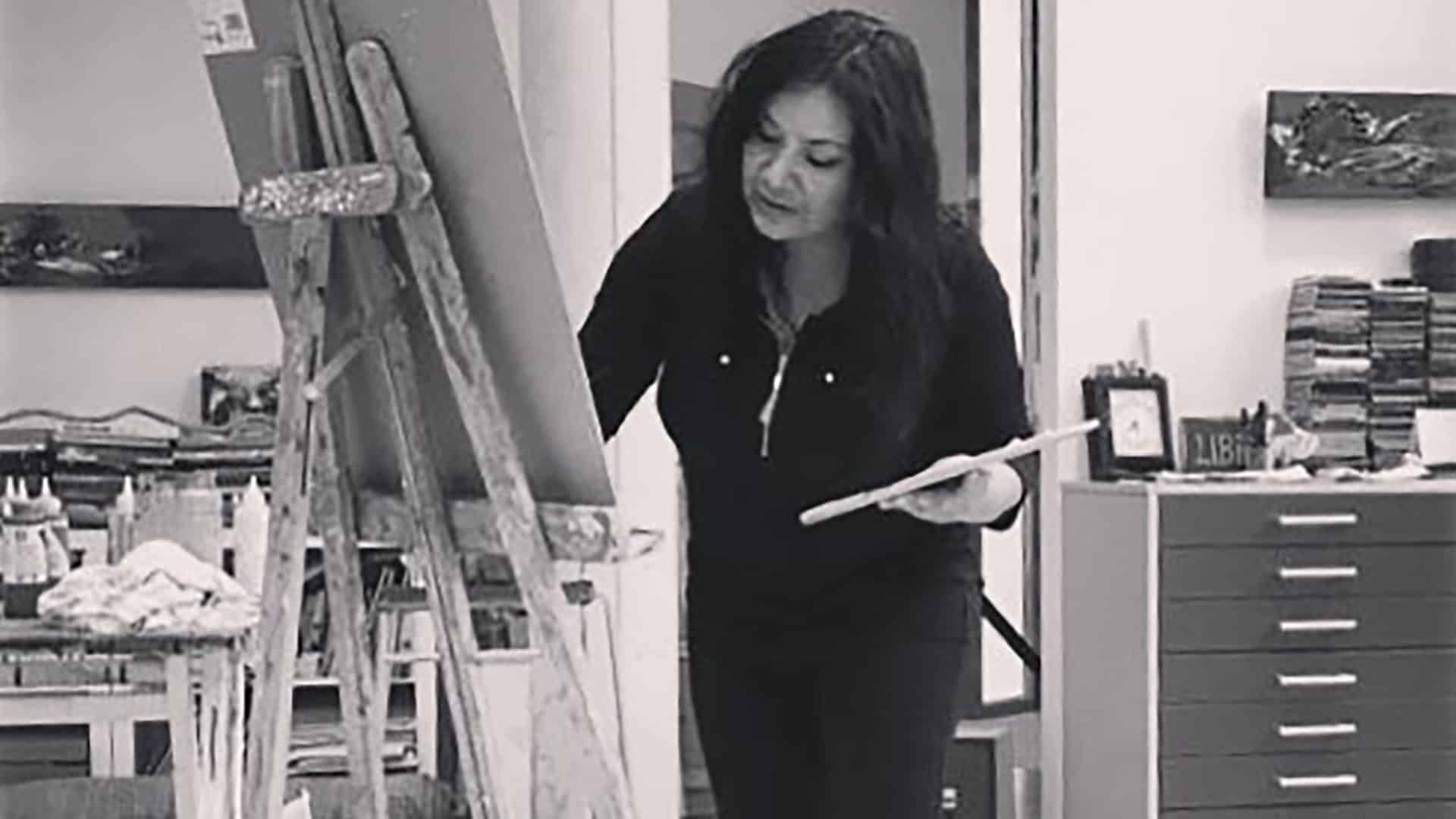
Oil painting has been a favorite of artists for centuries because of its richness, flexibility, and slow drying time, which allows for blending and layering. If you’re new to this beautiful medium, don’t worry, this guide will take you through every stage, step by step.
Gather Your Supplies
Before you begin, you’ll need the following materials:
Essential Materials:
- Oil paints (start with a basic set: titanium white, ultramarine, blue, cadmium red, yellow ochre, burnt umber)
- Canvas or canvas board
- Brushes (hog bristle or synthetic, in various sizes and shapes)
- Palette (wooden or plastic, or a disposable palette pad)
- Palette knife (for mixing and texture)
- Turpentine or odorless mineral spirits (for thinning paint and cleaning brushes)
- Linseed oil or other medium (to increase flow and transparency)
- Rags or paper towels
- Easel (optional, but helpful)
- Apron or old clothes
- Gloves (optional for skin protection)
Prepare Your Workspace
Oil painting can get messy. Set up in a well-ventilated area with good lighting. Use newspaper or a drop cloth to protect surfaces. Keep your materials organized and within reach.
Prime the Canvas (if needed)
Most store-bought canvases are pre-primed with gesso and ready to use. However, if you’re using raw canvas or want a smoother surface:
- Apply 1–2 coats of acrylic gesso with a wide brush.
- Let each coat dry fully and sand lightly for a smoother finish.
Sketch Your Composition
Use a light pencil or thinned paint (burnt umber works well) to outline your composition on the canvas. This helps guide your painting without being too bold or distracting.
Start With an Underpainting (Optional)
An underpainting is a monochrome version of your final image. It helps define values (light and dark) and structure.
- Use a single color like burnt sienna or umber.
- Thin the paint with turpentine/mineral spirits.
- Block in light, midtone, and dark areas.
Let it dry before moving to the next stage.
Mix Your Colors
Using your palette, mix your colors before you begin painting. Start with simple mixes and slowly add complexity. Keep a palette knife handy for cleaner, more accurate mixing.
Apply Paint — Start Lean, Then Fat
This is where you start building your painting in layers:
- First layers should be “lean” (more solvent, less oil).
- Later layers should be “fat” (more oil, less solvent).
- This “fat over lean” rule helps prevent cracking as the painting dries.
Start with broad shapes and background, then move to details and highlights.
Let Layers Dry
Oil paint takes time to dry—anywhere from 1–14 days, depending on thickness and medium used.
- Don’t rush it.
- Avoid touching or layering wet paint unless intentionally blending.
Add Final Details and Highlights
Once the main layers are dry or semi-dry, refine your painting:
- Add crisp details, textures, and highlights.
- Use smaller brushes for precision.
- Add glazes (thin transparent layers) to adjust color depth.
Clean Up
Clean your brushes thoroughly with turpentine or mineral spirits, then wash with soap and water. Wipe your palette and store paints properly (seal tubes tightly).
Tip: Store used rags in a metal container with a lid. Oil-soaked rags can be flammable.
Let It Dry Completely
Once the painting is finished:
- Let it dry in a dust-free, well-ventilated area.
- Drying can take weeks to months, depending on paint thickness.
Varnish (Optional but Recommended)
After the painting has fully cured (usually after 6 months), apply a varnish to:
- Protect from dust and UV light
- Enhance color vibrancy
Use removable varnish specifically made for oil paintings.
Bonus Tips for Beginners
- Don’t overwork the paint – keep your brushstrokes intentional.
- Use a limited palette to learn color mixing.
- Practice value studies (light/dark) before working in full color.
- Experiment! Mistakes are part of the learning process.
Oil painting takes patience, observation, and practice -but it’s a deeply rewarding medium. With time, you’ll develop your own style and rhythm. Don’t be afraid to make mistakes or revisit old paintings. Every canvas is a learning opportunity.
Guía Completa para Pintar al Óleo (al estilo mexicano)
La pintura al óleo ha sido una de las técnicas favoritas de artistas de todo el mundo durante siglos – por su textura, profundidad y por lo fácil que es trabajar con ella. Su secado lento te permite mezclar colores, crear capas y lograr acabados únicos. Si estás empezando en este hermoso medio, no te preocupes. Aquí te dejo una guía paso a paso para que te animes a pintar como todo un profesional.
Reúne tus materiales
Antes de comenzar, asegúrate de tener a la mano lo básico:
Materiales esenciales:
- Pinturas al óleo (empieza con una paleta básica: blanco titanio, azul ultramar, rojo cadmio, ocre amarillo, siena tostada, sombra tostada)
- Lienzo o tabla para pintar
- Pinceles (de cerda de jabalí o sintéticos, de distintos tamaños y formas)
- Paleta (de madera, plástico o desechable)
- Espátula (para mezclar o dar textura)
- Aguarrás o esencia mineral sin olor (para diluir pintura y limpiar pinceles)
- Aceite de linaza u otro medio (para aumentar fluidez y transparencia)
- Trapos o toallas de papel
- Caballete (opcional, pero muy útil)
- Delantal o ropa vieja
- Guantes (opcional, para proteger tus manos)
Prepara tu espacio
La pintura al óleo puede ser un poco desordenada, así que busca un área bien ventilada y con buena luz.
Cubre la mesa o el piso con papel periódico o una lona.
Mantén todo organizado y a la mano – te va a facilitar mucho el proceso.
Prepara tu lienzo
La mayoría de los lienzos que venden ya vienen preparados con gesso, listos para usar.
Pero si tienes uno sin preparar o quieres una superficie más suave:
- Aplica una o dos capas de gesso acrílico con una brocha ancha.
- Deja secar bien cada capa.
- Lija suavemente si quieres una textura más lisa.
Dibuja tu composición
Con lápiz suave o pintura diluida (siena tostada funciona bien), haz un boceto ligero sobre el lienzo.
Esto te servirá de guía sin marcar demasiado la superficie.
Haz una pintura base (opcional)
Una pintura base o “underpainting” es una versión monocromática de tu obra final.
Te ayuda a definir luces y sombras antes de aplicar color.
Usa un solo tono (como siena o sombra tostada) y:
- Dilúyelo con aguarrás.
- Bloquea las zonas claras, medias y oscuras.
- Deja secar antes de continuar.
Mezcla tus colores
Coloca un poco de pintura en tu paleta y comienza a mezclar con la espátula.
Empieza con combinaciones simples y poco a poco explora tonos más complejos.
Evita mezclar directamente con el pincel para mantener los colores limpios.
Empieza a pintar — “Delgado sobre Grueso”
Este es el principio más importante del óleo:
Las primeras capas deben ser más “delgadas” (más solvente, menos aceite)
Las últimas capas deben ser más “gruesas” (más aceite, menos solvente)
Esto evita que la pintura se cuartee al secarse.
Empieza con las formas grandes y el fondo, y deja los detalles y brillos para el final.
Deja secar por capas
La pintura al óleo seca despacio: puede tardar de 1 a 14 días, según el grosor y los medios usados.
- No te desesperes ni quieras retocar sobre pintura húmeda.
- Si quieres mezclar, hazlo intencionalmente, no por accidente.
Agrega detalles y brillos finales
Cuando las capas principales estén secas o semi-secas, es hora de refinar:
- Añade texturas, luces y sombras con pinceles pequeños.
- Aplica veladuras (capas finas y transparentes) para dar más profundidad.
Limpieza
Limpia tus pinceles con aguarrás o esencia mineral, y luego con agua y jabón.
Limpia la paleta y cierra bien los tubos de pintura.
Importante: Los trapos con aceite pueden ser inflamables. Guárdalos en un recipiente metálico con tapa.
Deja secar completamente
Coloca tu pintura en un lugar ventilado y libre de polvo.
Dependiendo del grosor, puede tardar semanas o meses en secarse por completo.
Barnizado (opcional, pero recomendable)
Después de unos 6 meses, cuando la pintura esté completamente curada, puedes aplicar un barniz especial para óleo.
Esto ayuda a:
- Proteger contra polvo y luz UV
- Realzar los colores y el brillo original
Consejos finales para principiantes
- No sobretrabajes la pintura; deja que las pinceladas respiren.
- Usa una paleta de colores limitada al inicio.
- Practica valores de luz y sombra antes de pasar al color.
- Y sobre todo… ¡diviértete! Los errores también son parte del aprendizaje.
Pintar al óleo requiere paciencia, observación y práctica, pero el resultado vale totalmente la pena. Con el tiempo, descubrirás tu propio estilo y ritmo. Así que ponte el delantal, prepara tu paleta y ¡a pintar se ha dicho!



